Small-scale agriculture, rural residential communities, and rolling hills are typical of the west end of the byway. Views of all three of the corridor’s volcanoes can be seen from this section of roadway—the only place on the byway where all three mountains can be seen at once. View the Cowlitz River, a powerhouse along the Byway. Along with several hydroelectric dams forming great lakes, it is also a year-round fisher’s paradise and home to the best steelhead fishing in the state. A short side trip from the byway takes visitors to Cowlitz River salmon and trout hatcheries. The Cowlitz salmon hatchery is the largest in Washington State and has a very good self-guided tour through the facility. Lewis and Clark State Park has easy access to a protected stand of old-growth forest habitat and also includes one of the corridor’s most significant historic buildings, the 1850 John R. Jackson courthouse.
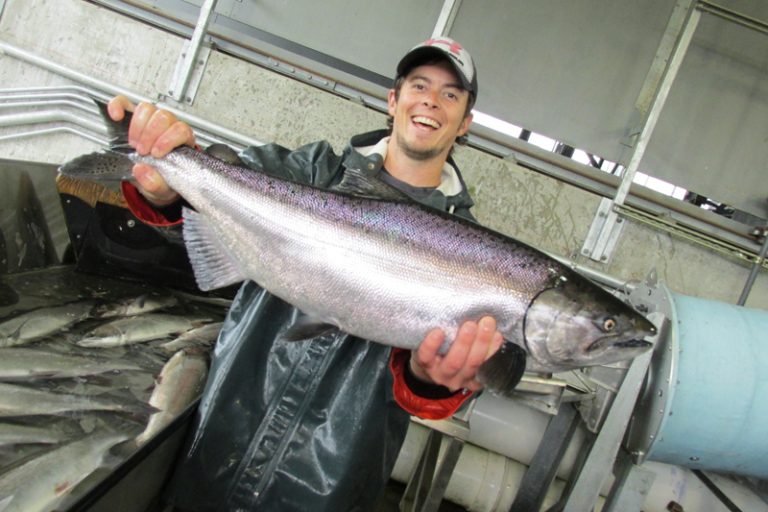
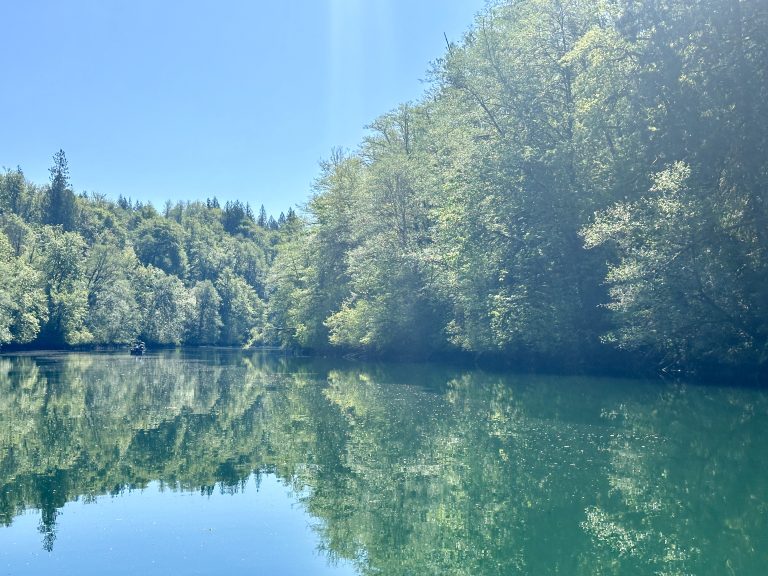
The Lakes District includes one of the most dramatic driving moments on the corridor – turning the corner to the Mayfield Lake causeway, with the clear water of the lake surrounding the road and the green backdrop of the forested shoreline. Recreation facilities on Mayfield and Riffe Lakes are some of the busiest in the corridor, including camping, fishing, wildlife watching, and hiking. The community of Mossyrock provides small-town character and services for visitors.
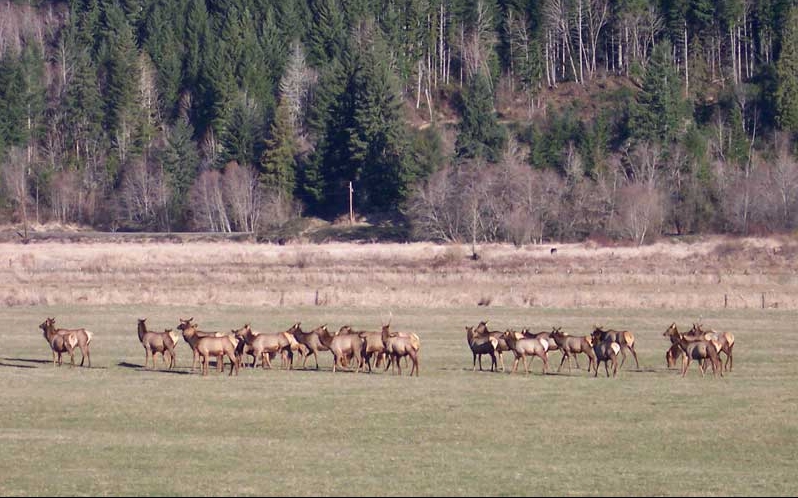
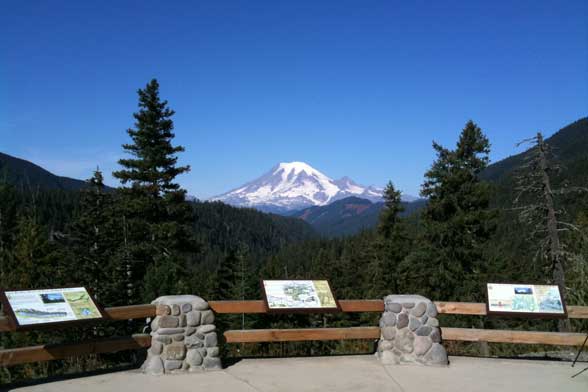
The scenic crown of the White Pass Scenic Byway, this section climbs steeply towards the pass with outstanding views into the Goat Rocks Wilderness and Mount Rainier National Park. Scenic pullouts provide views of Mount Rainier and other alpine peaks, along with steep-walled canyons, tall waterfalls, and unique volcanic geological formations.
As the Byway crosses over White Pass and begins winding down the east slope of the Cascades, it passes Rimrock Lake, a large reservoir created by the Tieton Dam on the Tieton River. This section of the byway includes beautiful ponderosa pine forests and scenic vistas over Rimrock Lake. Water is released into the Tieton River over several weeks each fall, providing a great opportunity for river rafters as well as year-round fishing, camping, and wildlife viewing. Without the heavier vegetation of the west slopes, the volcanic geology of this region is exposed creating dramatic views from the highway. In the fall, larches on the surrounding hillsides turn a clear yellow, celebrating the season before winter snowfall. Trails and camping areas are located throughout the Rimrock area.

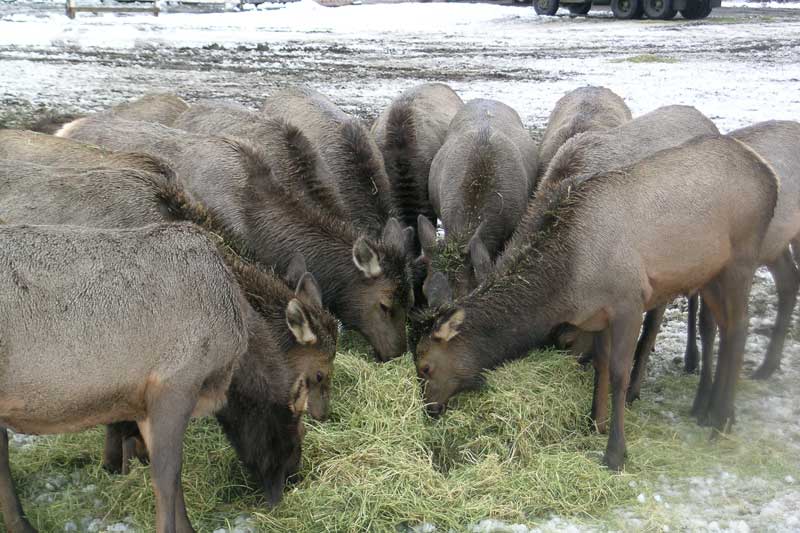
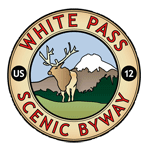
White Pass Scenic Byway
PO Box 805
Chehalis, Washington 98532
info@whitepassbyway.com
Sign up for our e-newsletter to stay updated on the Byway events and activities.
Questions or Comments? Drop us a note we’d love to hear from you.